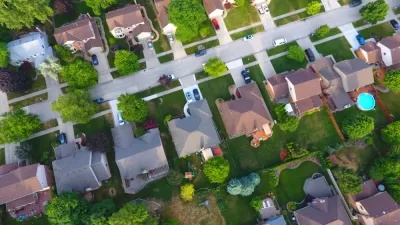NIMBYism is often expressed as concerns about crime, congestion, schools, property values, and “quality of life.” But when developments are built these fears rarely come to pass.

NIMBY stands for “Not in My Back Yard.” In the housing world it’s used to describe people, typically existing residents (especially homeowners), who oppose new housing development near their homes—particularly denser or more affordable housing.
Many housing advocates reserve the term NIMBY for residents with substantial privilege who are seeking to preserve that privilege, and not residents opposing development for other reasons, such as fear of displacement. Read more:
- “NIMBY: Where, When, and to Which Developers It Happens”
- “Who, Why, and How Communities Oppose Affordable Housing”
NIMBYism is often driven, more or less openly, by racism and classism. But the concerns more commonly voiced are about increased crime, traffic congestion, strain on sewers, overcrowded schools, and lowered property values and “quality of life.” When developments are built, however, these fears rarely come to pass. Some examples:
- “Fear of Affordable Housing: Perception vs Reality”
- Do Section 8 Voucher Holders Increase Crime in a Neighborhood?
- Does Affordable Housing Development Lower Nearby Property Values?
- “Learning from Mt. Laurel”: In the suburb whose exclusive zoning led to New Jersey’s fair share affordable housing law, research explores what the affordable housing finally built there has meant to the town—and whether anyone even knows it’s there.
Nonetheless, community opposition in the permitting stages frequently leads to increased costs and delays in many affordable housing projects. That’s something many developers don’t want to deal with. When NIMBYism is expressed through exclusionary zoning, it can keep affordable housing out of certain communities altogether.
The affordable housing field has many strategies it can use to try to overcome NIMBY opposition and get housing built in places where it has been kept out.
Win the Fight
At the individual project level, developers employ a range of community engagement strategies, rhetorical devices, and design choices to overcome, or at least ease, opposition. For example ...
FULL STORY: What Is NIMBYism and How Do Affordable Housing Developers Respond to It?

Alabama: Trump Terminates Settlements for Black Communities Harmed By Raw Sewage
Trump deemed the landmark civil rights agreement “illegal DEI and environmental justice policy.”

Planetizen Federal Action Tracker
A weekly monitor of how Trump’s orders and actions are impacting planners and planning in America.

The 120 Year Old Tiny Home Villages That Sheltered San Francisco’s Earthquake Refugees
More than a century ago, San Francisco mobilized to house thousands of residents displaced by the 1906 earthquake. Could their strategy offer a model for the present?

Opinion: California’s SB 79 Would Improve Housing Affordability and Transit Access
A proposed bill would legalize transit-oriented development statewide.

Record Temperatures Prompt Push for Environmental Justice Bills
Nevada legislators are proposing laws that would mandate heat mitigation measures to protect residents from the impacts of extreme heat.

Downtown Pittsburgh Set to Gain 1,300 New Housing Units
Pittsburgh’s office buildings, many of which date back to the early 20th century, are prime candidates for conversion to housing.
Urban Design for Planners 1: Software Tools
This six-course series explores essential urban design concepts using open source software and equips planners with the tools they need to participate fully in the urban design process.
Planning for Universal Design
Learn the tools for implementing Universal Design in planning regulations.
Clanton & Associates, Inc.
Jessamine County Fiscal Court
Institute for Housing and Urban Development Studies (IHS)
City of Grandview
Harvard GSD Executive Education
Toledo-Lucas County Plan Commissions
Salt Lake City
NYU Wagner Graduate School of Public Service




























